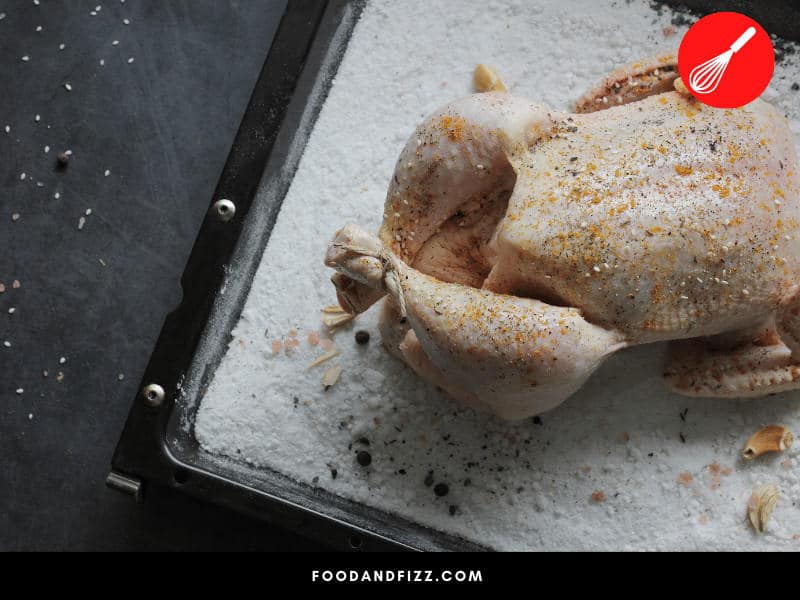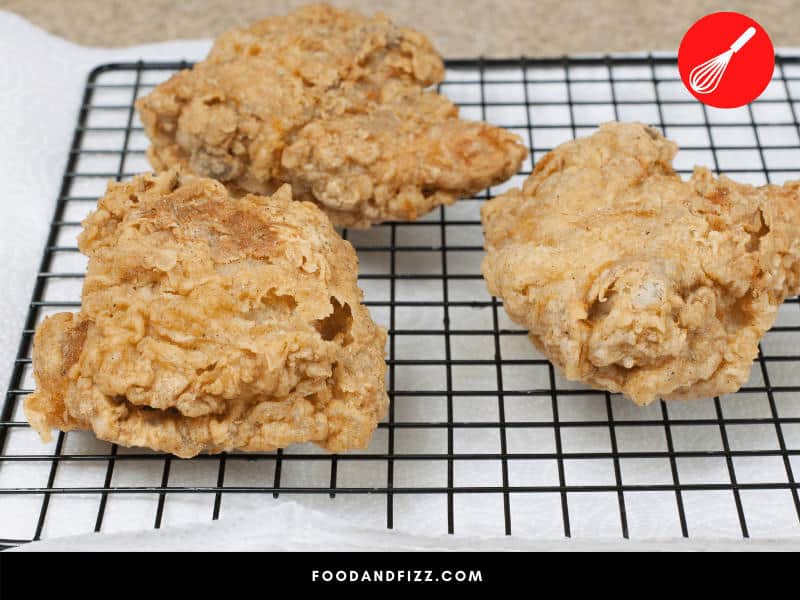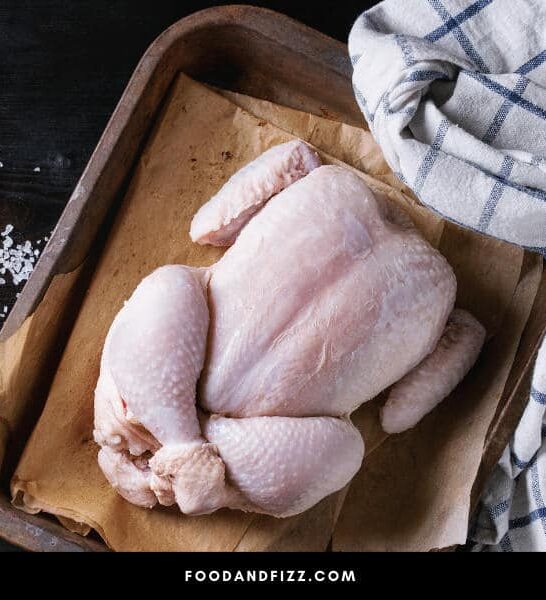While drying chicken has always been synonymous with paper towels, this old-age technique is slowly ending as more consumers seek sustainable practices. While some will be everyday alternatives that you may have used, others may require more effort and time. So, what are these solutions?
How To Dry Chicken Without Paper Towels?
To dry chicken without paper towels, you can dry excess moisture from the chicken by utilizing alternative methods such as air drying and heat or salt to eliminate any sogginess and splatter incidences that could cause harm during your cooking sessions. If you prefer faster drying methods, heat application will be your ideal solution, with an oven and stovetop coming in handy. If you prefer to utilize more straightforward approaches, solutions such as salting and air drying will be your go-to.

How To Dry Chicken Quickly
When in a rush, a dehydrator or oven will be your go-to. The trick to this will be placing the chickens close together while ensuring they do not overlap or touch. Place the chicken in a dehydrator or preheated oven at 140°F (60°C).
This should take about 10 to 24 hours, based on the size of the chicken. Smaller pieces will dry faster, while larger sizes will take longer. If using a marinade, the chicken will also dry faster, so keep that in mind.

Air Drying Raw Chicken
Air drying meat has existed since time immemorial and will be one of the more straightforward methods in this guide. Take the chicken out of the package and let it rest on your counter for up to four hours. The chicken skin will dry during this process, making it crispy when cooked.
Ensure that your kitchen is clean to avoid insects and dirt resting on the meat when using this method. If you are in a hurry, you could also sprinkle some salt on the chicken to speed up the air-drying.

How To Use The Fridge To Dry Chicken
The fridge will be another alternative to use. Put your chicken in the refrigerator for about 60 minutes. If prepping your food for the next day, putting it in the fridge overnight will increase your chances of a dry chicken. This allows the moisture to evaporate more, reducing your chances of soggy chicken.
How To Salt Chicken
To salt bone-in chicken pieces, apply salt between the skin and meat. Let the chicken pieces rest in the fridge anywhere between 6-24 hours. A wire rack and baking sheet will also be ideal for placing on, allowing it to rest until dry.
If using a whole chicken, apply some salt inside the chicken cavity evenly. Proceed to apply additional salt under the skin of the legs and breasts. Like the bone-in chicken pieces, allow these to rest for 6-24 hours in the fridge, over a baking sheet or wire rack.

How To Heat Chicken
If you opt to use heat for drying your chicken, your homemade chicken jerky should be heated to safe temperatures using these two listed methods to avoid food poisoning.
The first will be heating your chicken strips in a marinade before drying. The second will be heating your strips in an oven after drying. Note that heating marinated chicken strips before drying will likely reduce the time needed to dry it.
The color and texture will also be different from your regular jerky. Heating can be done by utilizing either an oven or dehydrator, as previously stated, or using a stovetop.
For safety purposes, your chicken should be heated to an internal temperature of 165°F(73.88°C).
How To Use The Fan To Dry Chicken
Another alternative to using paper towels is using the fan. Place the chicken on a wire rack over a baking sheet and place it in front of a fan. This will be quicker than air drying, with a powerful fan reducing the time spent on this process.
Ensure that your fan is cleaned before use to ensure that dirt and other particles do not settle on your chicken.
How To Use Momentum To Dry Chicken
Relying on momentum will also be a straightforward method for drying chicken. For this, swing the chicken in a circular motion or move it up and down for a few minutes.
The only downside to this method is that it will be messy, as the water will likely get to other parts of your kitchen. Open outdoor paces will be ideal for this method, reducing the risk of spreading bacteria to other food items in your kitchen.
How To Use a Cloth Towel To Dry Chicken
A cloth towel will also come in handy, making it an environmentally-friendly option. Grab a cloth towel and pat your chicken dry.
The towel needs to be clean and dry as any contamination will transfer bacteria and cause food poisoning. Unlike other disposable alternatives, your cloth towel will need to be washed after you are done drying your chicken.
How To Use a Paper Bag To Dry Chicken
A paper bag can also do wonders when you need to do away with paper towels. Put the chicken in a paper bag for a few minutes, allowing it to absorb excess moisture.
Like cloth towels, ensure that your bag is clean as any dirt could contaminate your chicken. Dispose of your paper bag after you are finished.
How To Use Bamboo Dish Cloths To Dry Chicken
Bamboo dishcloths are durable and a suitable paper towel replacement, making them another viable option for drying chicken. Just like your regular cloth towel, pat your chicken with this cloth until you are satisfied with the result.
How To Use Bamboo Paper Towels To Dry Chicken
Bamboo paper towels are unlike other typical towels, with their absorbent properties allowing for multiple uses. This will enable you to pat dry multiple chicken pieces with just one towel, cutting back the wastage evidenced by other paper towels.
How To Dry Fried Chicken
A few ways to dry fried chicken without paper towels include using a wire rack. After frying your chicken, place it on a wire rack over a cookie sheet. The oil will drip over the pan below and can be reused for a second time.
It can also be stored in a container to be used later. Draining over brown paper bags will also come in handy for this and cloth dish towels.

Frequently Asked Questions About Alternative Methods For Drying Chicken
What Can I Use To Drain Grease From Chicken?
Place your chicken over a wire rack over a baking sheet or a cooking pan to drain grease. Let it rest for a few minutes until you are ready to eat. Use the spill-off to prepare dishes such as roasted vegetables.
What Is a Substitute For Paper Towels When Drying Chicken?
There are various substitutes that you can use to pat your chicken dry, such as a clean cloth towel. Putting your chicken in a paper bag will also come in handy for this, and air dry it on the counter for at least four hours.
Can I Use Heat For Drying Chicken?
Heat will also be another alternative to drying your chicken. An oven, dehydrator, or stovetop will work just fine, with the trick being regulating your temperature based on how fast or slow you want your chicken to dry.
Conclusion On How to Dry Chicken Without Paper Towels
When it comes to drying chicken, various methods will come in handy in helping you avoid the use of paper towels. Some alternatives will help you speed up your process, while others will take time.
With this in mind, consider the time at your disposal and the safety standards for the equipment at hand.

